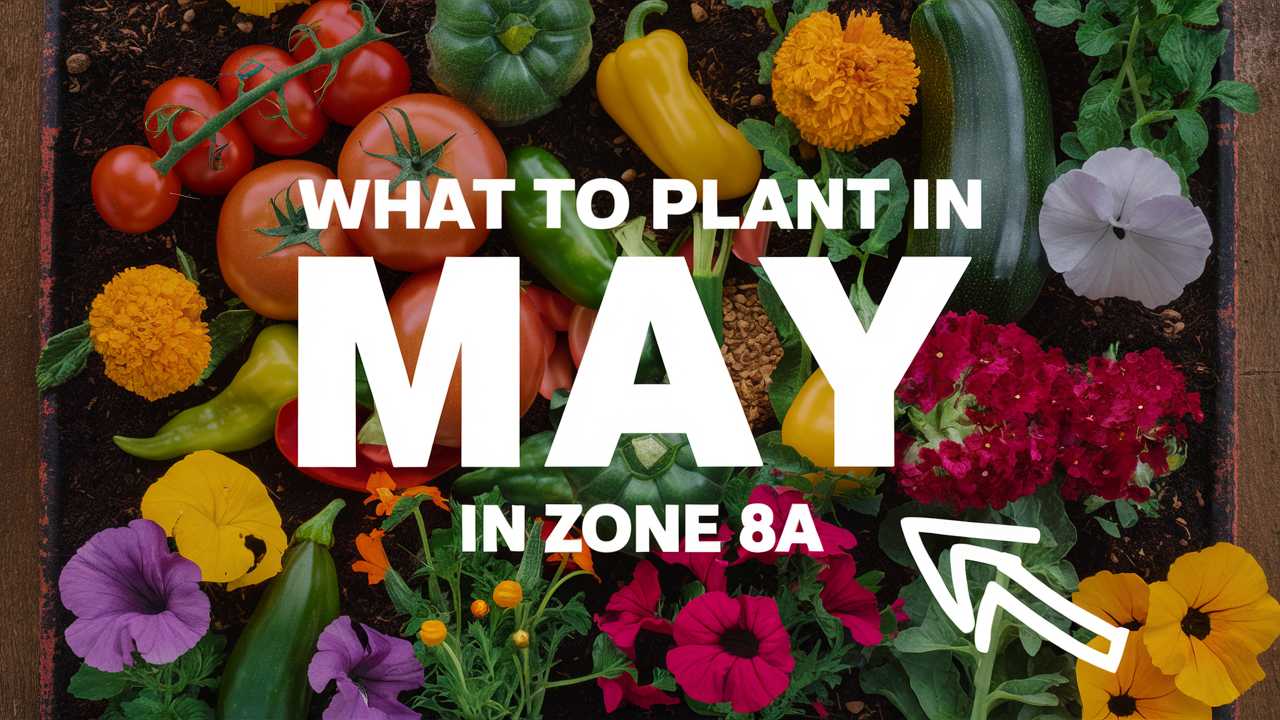The following guide details what you should plant during this month, tailored specifically for the conditions, climate, and soil types commonly found in USDA zone 8a.
Warm Weather Vegetables To Plant
Tomatoes
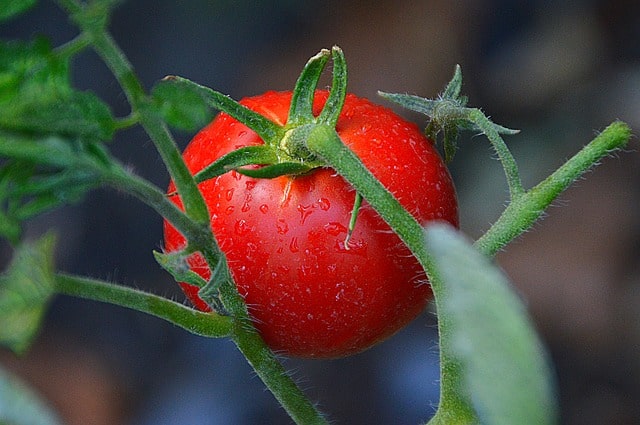
In zone 8a, May is the perfect time to plant tomatoes outdoors after the last frost. Choose heat-tolerant varieties like ‘Celebrity,’ ‘Better Boy,’ or ‘Cherokee Purple,’ which thrive in full sun and can handle temperatures up to 95°F. Use well-draining soil amended with compost to provide nutrients and enhance drainage. Water regularly, especially during hot spells, and consider using mulch to retain moisture and control weeds. Be proactive about managing pests like hornworms by inspecting plants frequently and using organic pesticides if necessary.
Peppers

Peppers flourish in the warmth of May, making it an excellent time to plant varieties such as ‘California Wonder’ and ‘Jalapeño.’ Plant seedlings in rich, well-draining soil after the last frost date. Space plants about 18 inches apart to allow for mature growth. Ensure they receive at least 6-8 hours of direct sunlight daily and provide consistent watering, particularly during dry spells. Watch for aphids and spider mites; use insecticidal soap or introduce predatory insects to keep populations under control.
Cucumbers
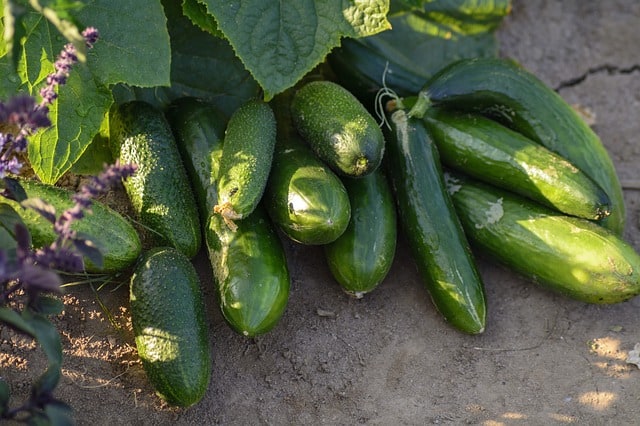
Cucumbers benefit from the warm temperatures of zone 8a. Plant seeds directly in the garden by mid-May when soil temperatures reach around 65°F. Select varieties like ‘Lemon’ or ‘Marketmore’ for their resilience and productivity. Ensure the seeds are spaced about 12 inches apart in rows, ideally with a trellis for support to promote airflow and prevent powdery mildew, which can thrive in the heat. Regularly water cucumbers, especially during fruit development, aiming for deep, consistent moisture without waterlogging.
Zucchini
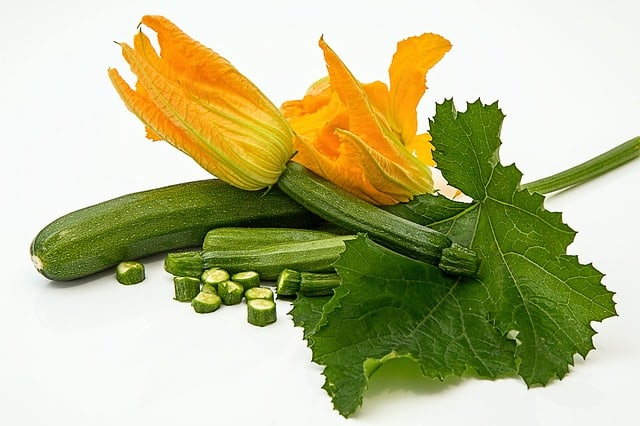
Zucchini grows exceptionally well in the hot summers of zone 8a. You can plant seeds directly in the soil in mid-May, ensuring soil temperatures are consistently warm (at least 70°F). Opt for varieties like ‘Black Beauty,’ which are known for their high yields. Space plants about 24 inches apart to accommodate their rapid growth and large leaves. Mulching will help retain moisture and control soil temperature. Be diligent about checking for squash bugs and cucumber beetles that can cause severe damage to plants.
Beans
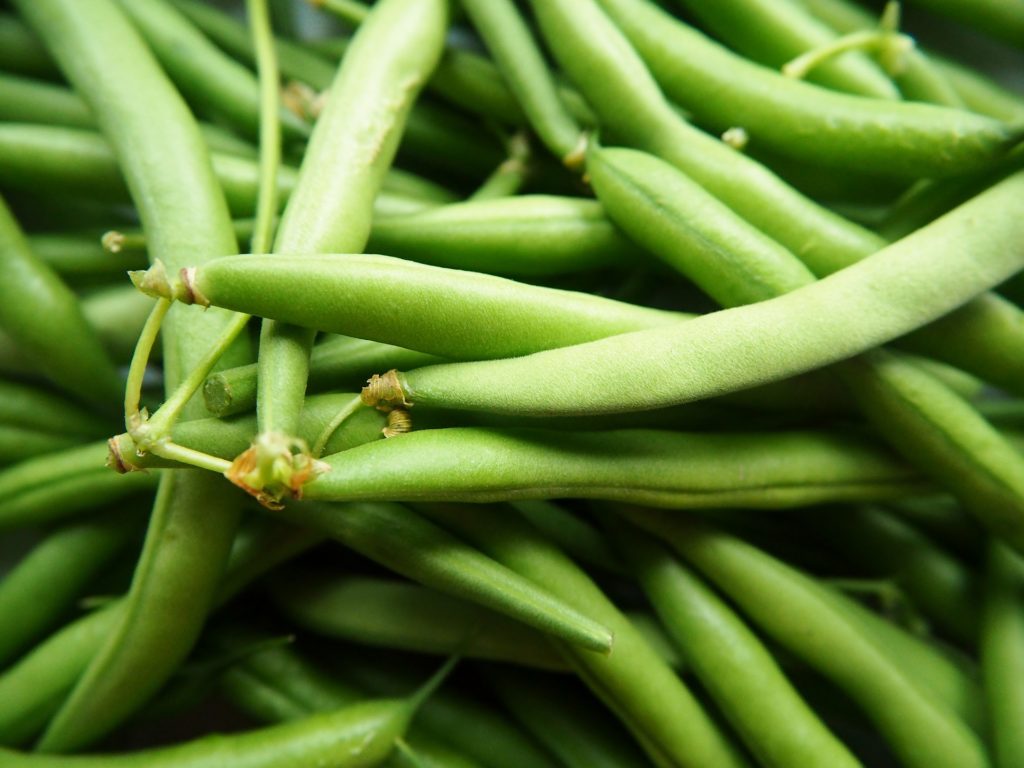
Beans, especially bush varieties like ‘Blue Lake’ beans, are ideal for planting in late May in zone 8a. They thrive in warm soil and grow quickly—typically maturing in approximately 50-70 days. Sow seeds directly in the ground, spacing them 1-2 inches apart in rows. Beans do not require heavy watering but do benefit from consistent moisture during flowering and pod development. Additionally, they naturally fix nitrogen in the soil, which improves soil fertility for subsequent plantings.
Corn
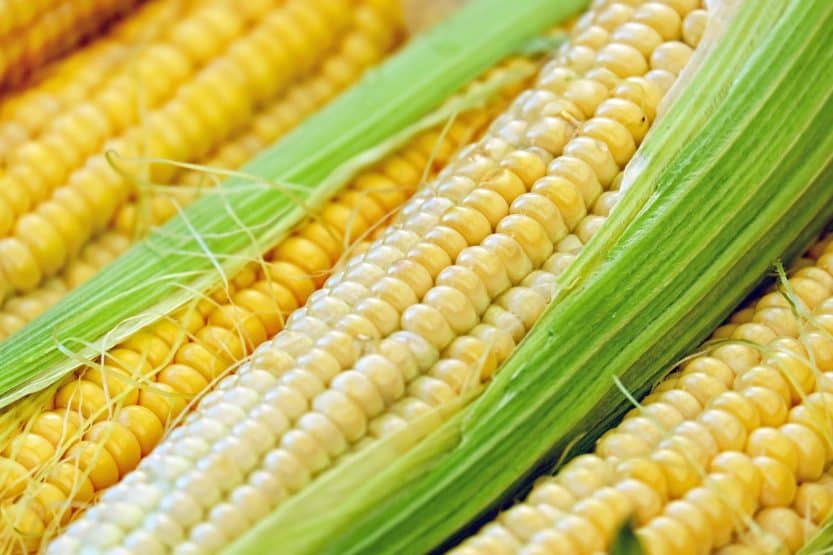
Corn requires a growing season of warm temperatures, making late May an excellent planting time. Choose sweet corn varieties like ‘Silver Queen’ or ‘Peaches and Cream’ that thrive in the heat of zone 8a. Plant seeds about 1-2 inches deep in well-drained soil, spaced approximately 12 inches apart. Corn prefers full sun and benefits from consistent moisture, especially during pollination. Planting in blocks rather than single rows can enhance pollination and yield, as corn is wind-pollinated.
Squash
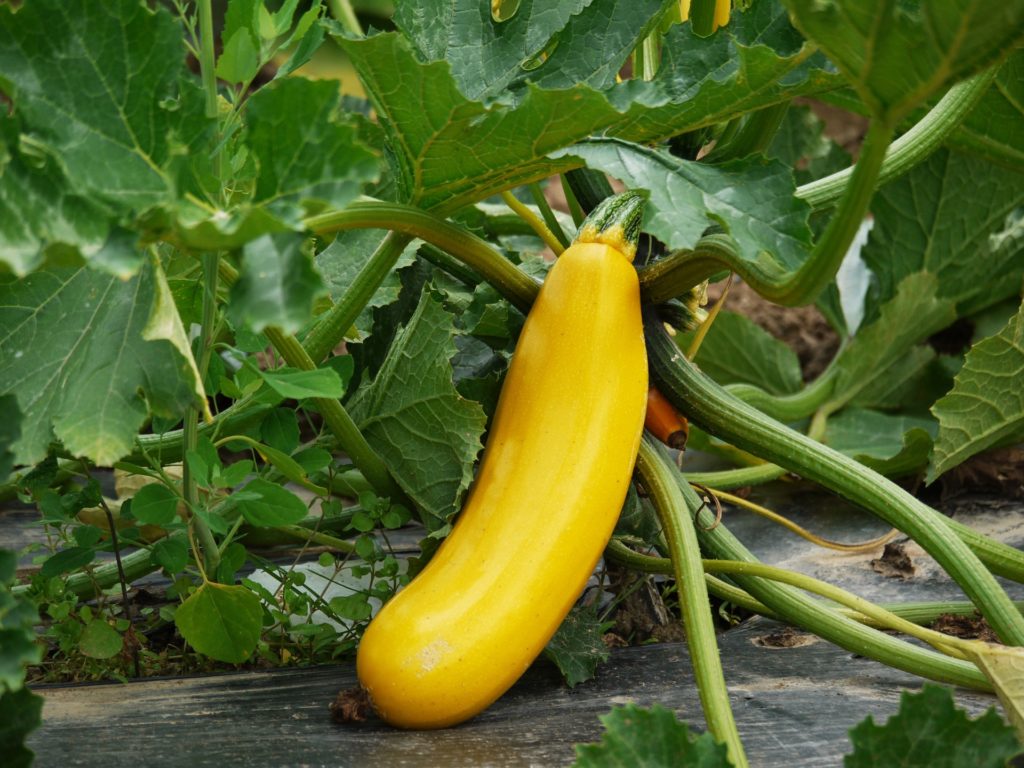
Summer squash varieties, such as yellow squash, can be seeded directly in the ground during May. Prepare your garden bed with well-draining soil that is rich in organic matter. Space each seed about 3 feet apart to allow for their sprawling growth. Ensure they receive at least 6 hours of sunlight daily, and water consistently, especially during flowering. Be sure to monitor for pests like squash bugs and utilize row covers early in the season to limit infestations.
Eggplant
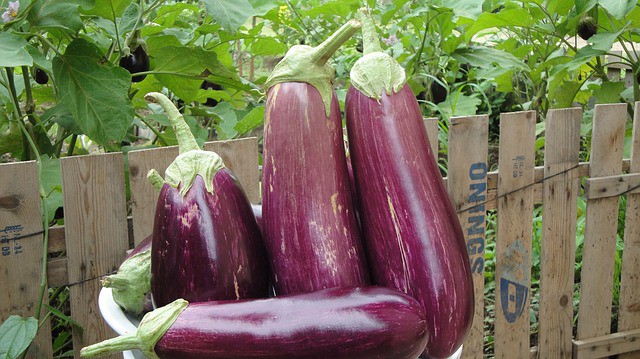
In May, eggplants can be transplanted outdoors once the temperatures are warm enough—ideally after the last frost. Choose varieties that thrive in heat, such as ‘Black Beauty’ or ‘Nadia.’ Space them 18-24 inches apart in a sunny spot with well-draining soil. Water regularly to maintain consistent moisture, especially during flowering and fruit-setting stages. Watch out for flea beetles and aphids; using floating row covers can provide protection until plants are established and stronger.
Okra
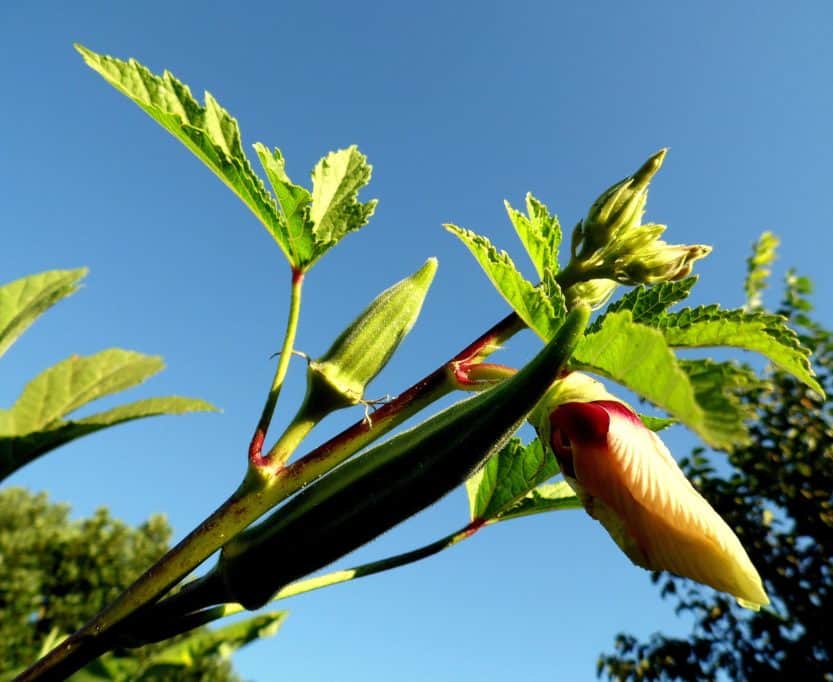
Okra is a staple in southern gardens, thriving in the warm conditions of zone 8a. Plant seeds directly in the garden in late May when soil temperatures reach 70°F. Space seeds 12-18 inches apart in full sunlight. Okra is drought-tolerant once established, but regular watering during hot spells will encourage better growth. Watch for pests like aphids and control their populations through natural means, such as introducing ladybugs or using Neem oil sprays.
Melons
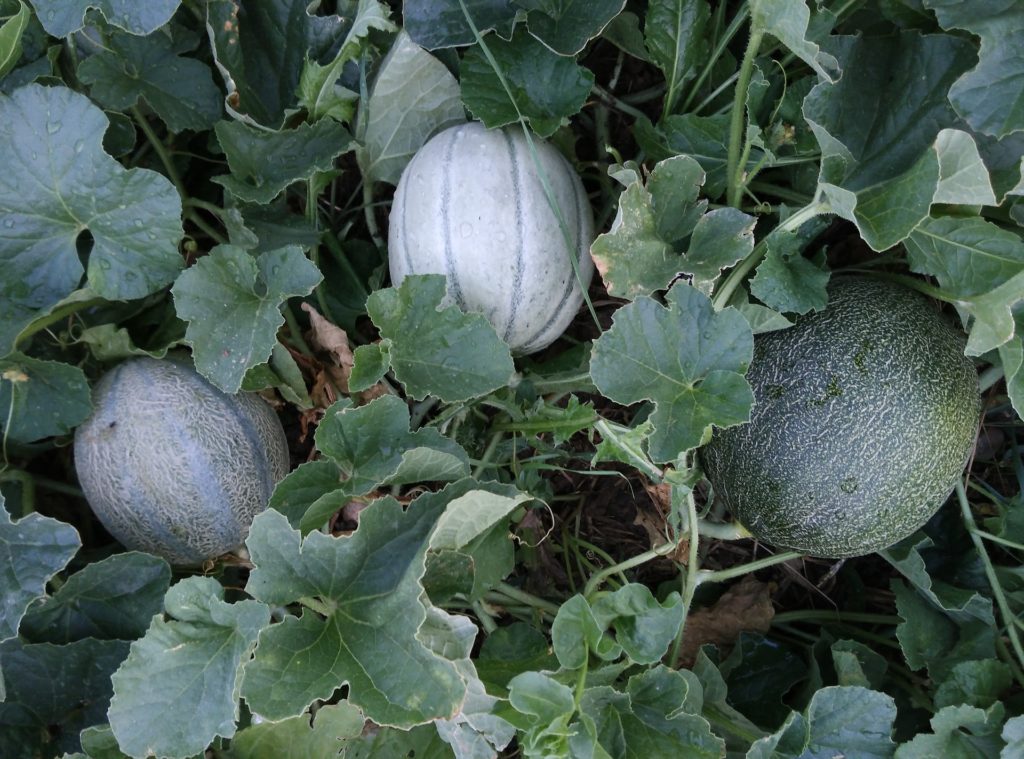
Melons, particularly cantaloupes and watermelons, do well when planted in May in zone 8a. Plant seeds directly in well-draining soil, spacing them 24-36 inches apart. Both types of melons prefer full sun and benefit from consistent watering, especially while the fruit develops. Melons can be prone to powdery mildew, so providing adequate spacing and airflow between plants is essential to reduce humidity levels around them.
Warm Weather Flowers To Plant
May’s mild climate in zone 8a is optimal for planting a variety of vibrant flowers. Below are options that can add color and life to your landscape.
Zinnias
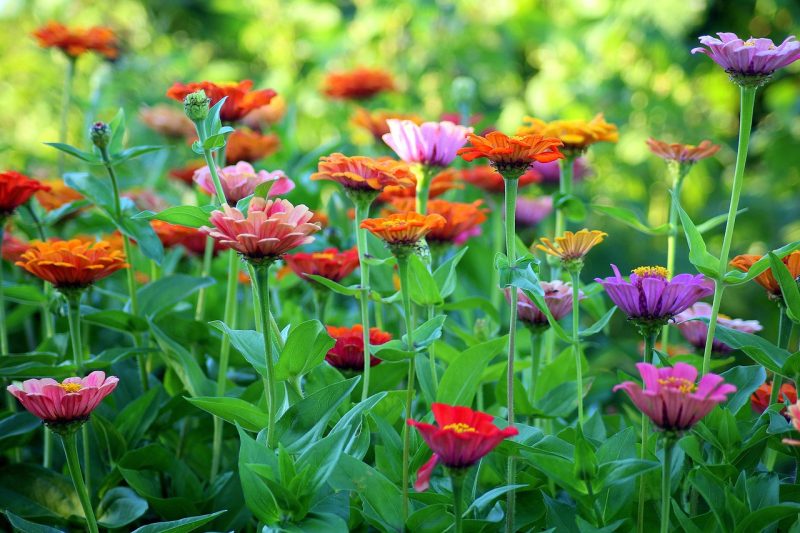
Zinnias thrive in the hot summer months of zone 8a and can be direct sown in May. Choose a sunny location and loosen the soil, mixing in compost for fertility. Space seeds or seedlings about 12 inches apart, as they will grow wide and bushy. Zinnias appreciate consistent moisture but are relatively drought-resistant once established. Regular deadheading will encourage continuous blooming, making them a great option for attracting pollinators.
Marigolds
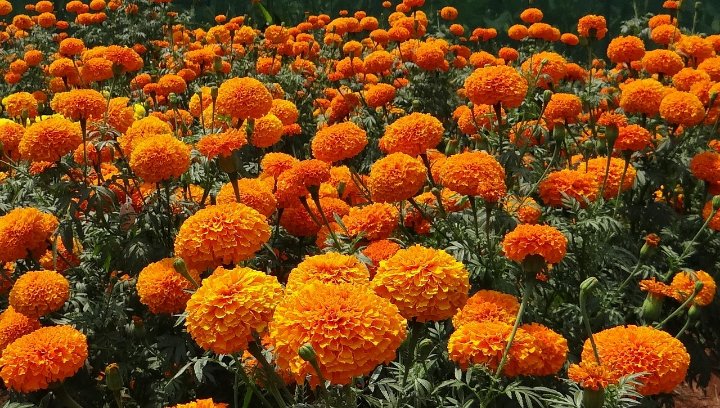
Marigolds are another excellent choice for zone 8a gardeners. Plant marigold seeds or seedlings in well-drained soil in sunny locations, spacing them about 12 inches apart. These annuals bloom profusely throughout the summer, helping deter pests with their fragrant leaves. Regular watering will keep them healthy but avoid saturated soil. Deadheading spent blooms will encourage additional flowering throughout the season.
Sunflowers
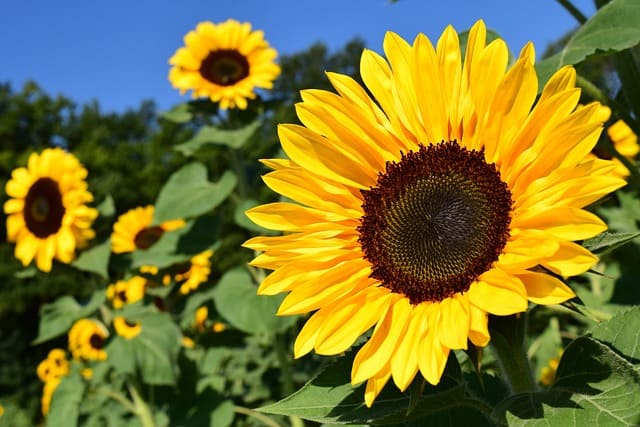
Planting sunflowers in May provides not only beauty but also food for birds and insects. Choose a sunny spot and plant seeds directly in the ground, spacing them 12-24 inches apart, depending on the variety’s mature height. Sunflowers thrive in warm conditions and can grow several feet tall. Regular watering will support healthy growth, and once established, they are fairly drought-tolerant. Ensure sufficient space to manage the height of taller varieties.
Cosmos
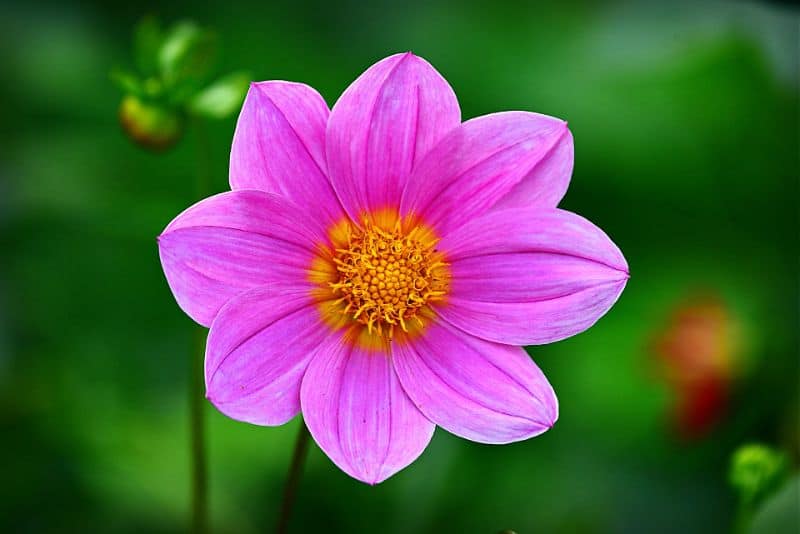
Cosmos are well-suited for the warm climate of zone 8a, and sowing them in May ensures vibrant blooms throughout the summer. They thrive in full sun and poor soil but should still be spaced about 12 inches apart to allow for airflow. Regularly deadhead to encourage further blooming, and ensure consistent moisture, especially during dry spells.
Petunias

Petunias can add a burst of color to gardens in zone 8a. Plant them in May, ensuring they have full sun and rich, well-drained soil. Space them 12-18 inches apart for optimal air circulation. Regular watering and deadheading spent blooms will sustain their flowering capacity throughout the season. Petunias can be grown in containers or directly in the ground, providing versatility in your garden design.
Lantana
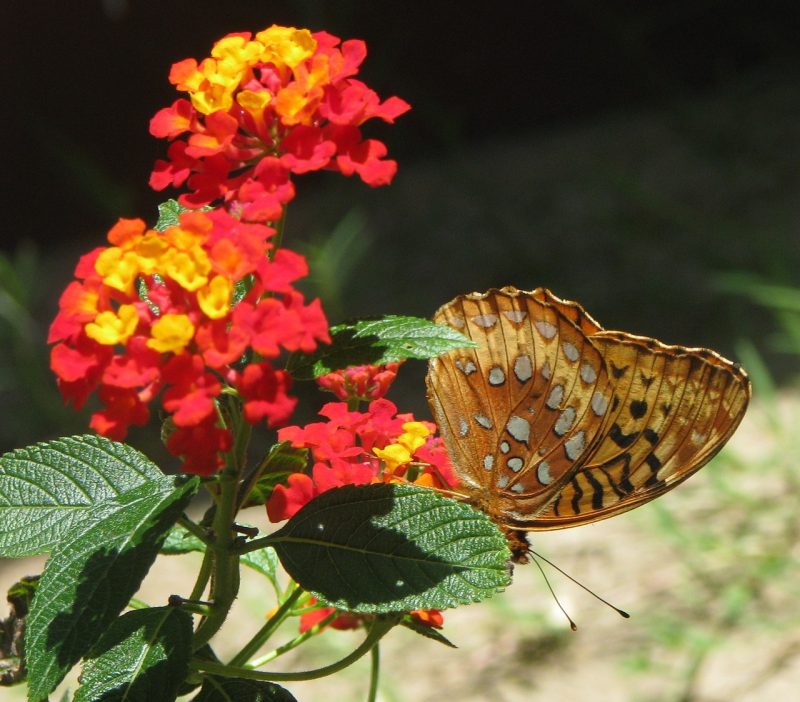
Lantana thrives in the heat of zone 8a and can be planted in well-draining soil in full sun. Space them about 18-24 inches apart to allow for their bushy growth. Lantana is drought-tolerant once established and produces vibrant clusters of flowers that attract butterflies. Pruning spent blooms will promote bushier growth and a more extended blooming season.
Geraniums
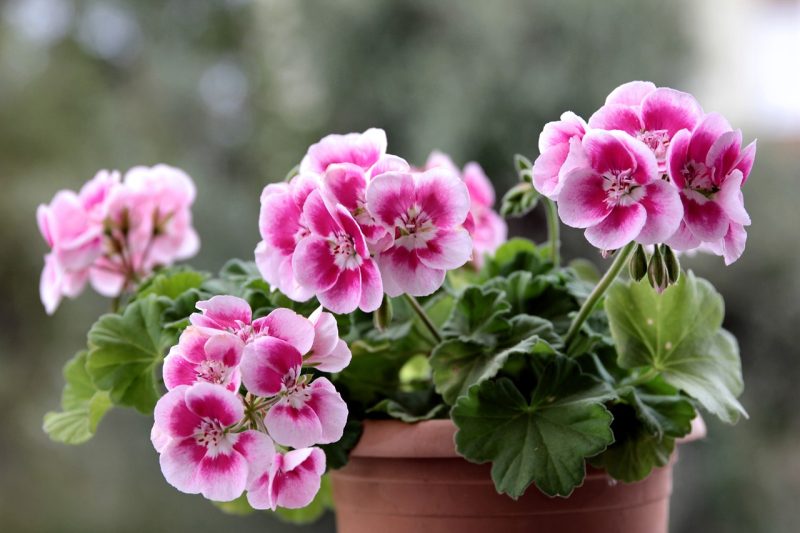
Geraniums are versatile and hardy flowers that do well in zone 8a. They can be planted in well-drained soil with full sun or partial shade in May. Space plants 12-18 inches apart, and ensure consistent watering to keep them healthy, especially during dry spells. Deadheading geraniums can also promote continuous blooming, providing color throughout the summer.
Dahlias
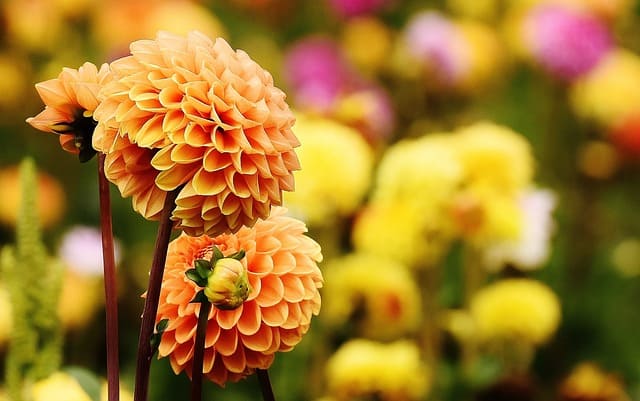
May is the perfect time to plant dahlia tubers in zone 8a. Choose a sunny location and amend the soil with compost to improve drainage and nutrient levels. Space tubers about 18 inches apart, ensuring they are positioned in the ground at a depth of 4-6 inches. Throughout their growing season, provide consistent moisture and consider staking taller varieties for support against wind. Proper deadheading will encourage prolific blooms.
Black-Eyed Susans
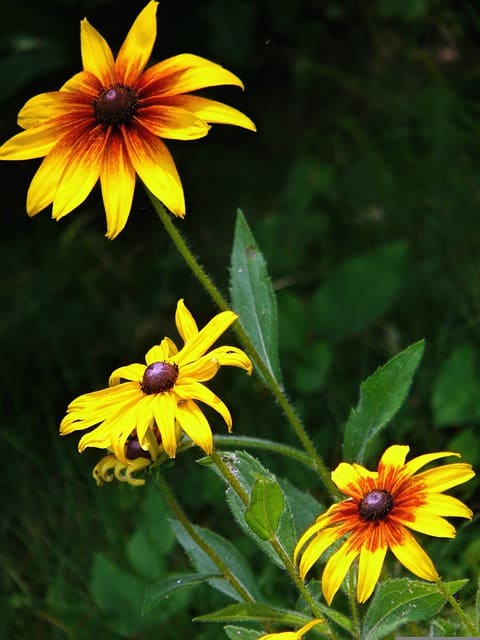
Plant black-eyed Susans in May for a sunny display that thrives in zone 8a. These perennial flowers prefer well-drained soil and full sun, so be sure to space your plants about 12-18 inches apart. They require moderate watering but can handle periods of drought once established. Deadhead spent flowers to encourage more blooms and cut back the plants in early spring for a resurgence of foliage and blooms.
Salvia
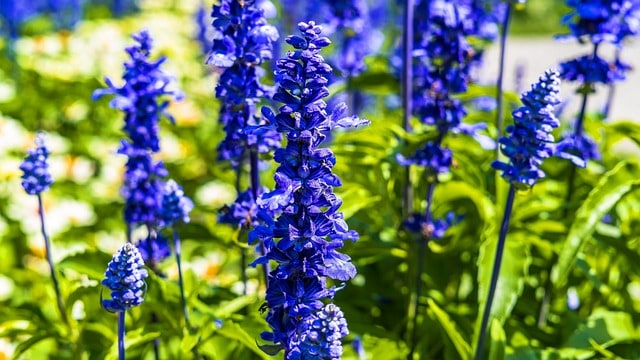
Salvia plants thrive in full sun and well-drained soil, making them an excellent choice for May planting in zone 8a. Ensure they are spaced 12-18 inches apart for proper airflow and sunlight exposure. Water regularly to keep them established, but salvia is relatively drought-tolerant once mature. These plants add color to the garden while attracting pollinators like bees and hummingbirds.
Warm Weather Perennial Flowers to Plant
Perennial flowers enhance the beauty of your garden year after year and thrive in the climate of zone 8a. Below are options to consider planting in May.
Echinacea (Coneflower)
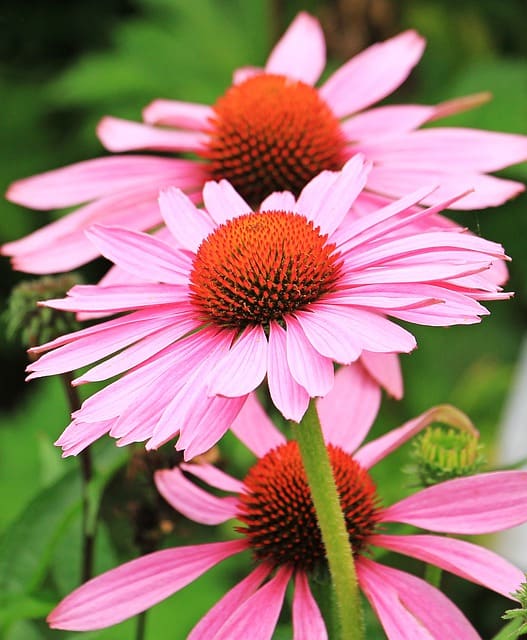
Echinacea, known for its resilience, can be planted in well-drained soil in full sun in May. Space the plants about 12-18 inches apart to allow for their natural growth pattern. They are drought-tolerant once established and will bloom from mid-summer to fall. Regular deadheading will promote additional blooms, and their seed heads provide food for birds in winter.
Daylilies
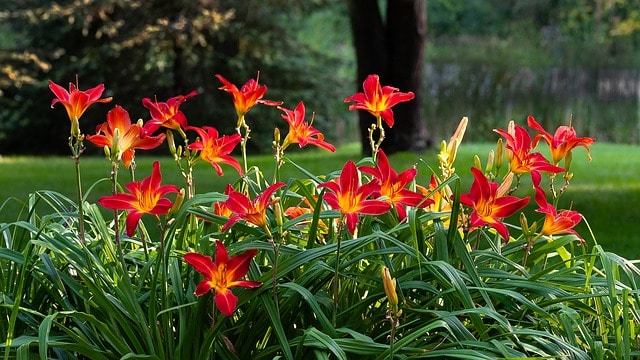
Daylilies are perfect for the climate of zone 8a and should be planted in May. They thrive in well-draining soil with full sun or partial shade and can be space 18-24 inches apart. Water regularly until firmly established—afterward, they require little care. Daylilies produce an impressive array of colors and can bloom for several weeks, offering an eye-catching display every summer.
Hostas
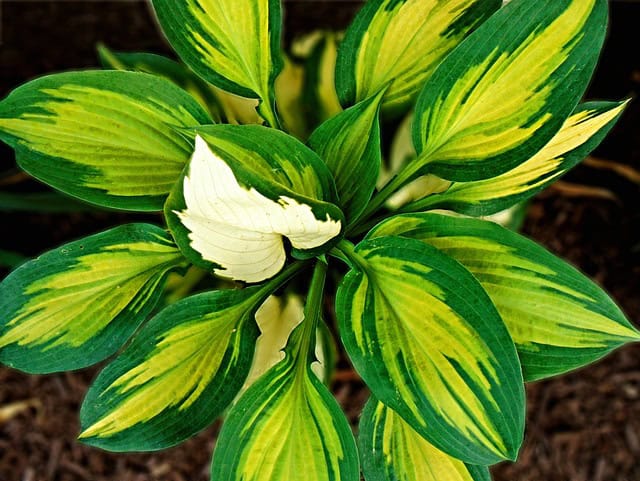
Hostas are fabulous shade perennials ideally suited for northern regions but can also perform well in partially shaded areas in zone 8a. Plant them in May, spacing them about 18-24 inches apart in rich, well-drained soil. Be sure to keep the soil consistently moist as they establish. Regular watering and mulching can significantly enhance their performance, particularly during hot spells.
Peonies
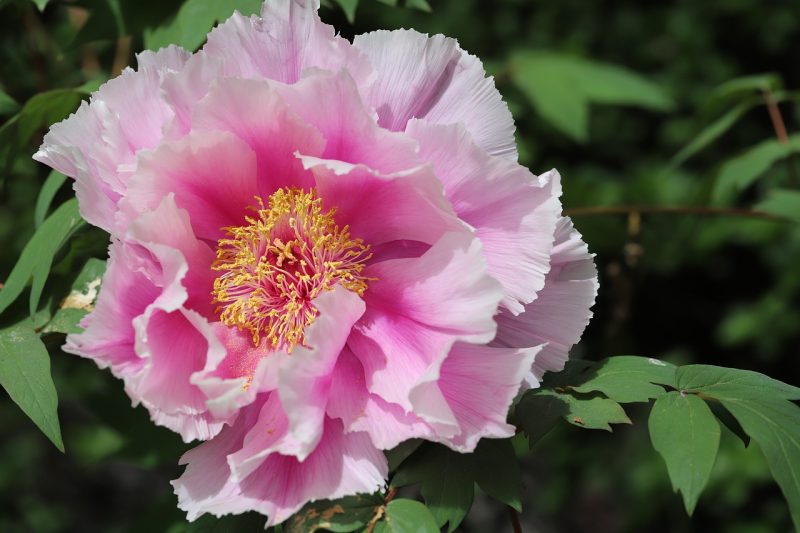
Plant peonies in May in full sun or partial shade, ensuring they are in well-draining soil. Dig a hole 1-2 inches deep to plant them, making sure the eyes are just below the soil surface. Space peonies at least 3 feet apart as they will grow large. Provide regular watering during their first year to establish roots, then they require minimal maintenance afterward. Peonies offer beautiful, fragrant blooms and can last for many years.
Lavender
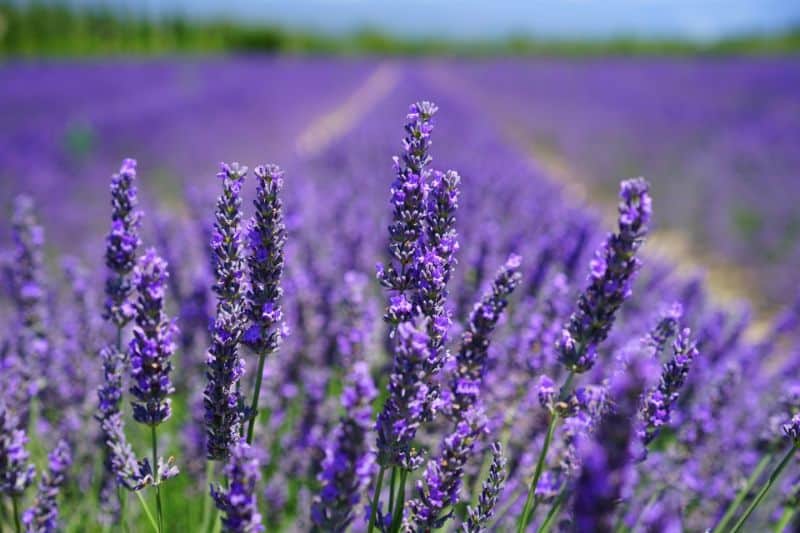
Lavender is well-suited for the warm conditions of zone 8a. Plant lavender in well-drained soil in a sunny location. Space plants about 18-24 inches apart to ensure air circulation. Water them regularly during the first growing season but allow the soil to dry out between waterings to prevent root rot. Trim back spent blooms in the fall to encourage vigorous new growth in the following spring.
Sedum
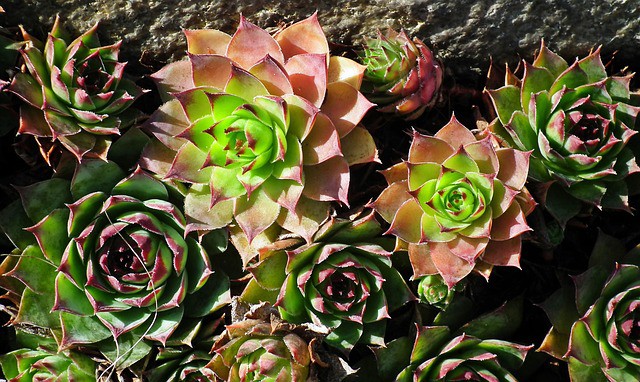
Sedum is a hardy, drought-tolerant perennial plant that thrives in full sun and well-drained soil, making it perfect for zone 8a. Space them about 12-18 inches apart to allow for proper airflow. Sedums require minimal watering once established, making them a good choice for xeriscape gardens or low-maintenance landscaping. They produce clusters of beautiful flowers in late summer, attracting bees and butterflies.
Russian Sage
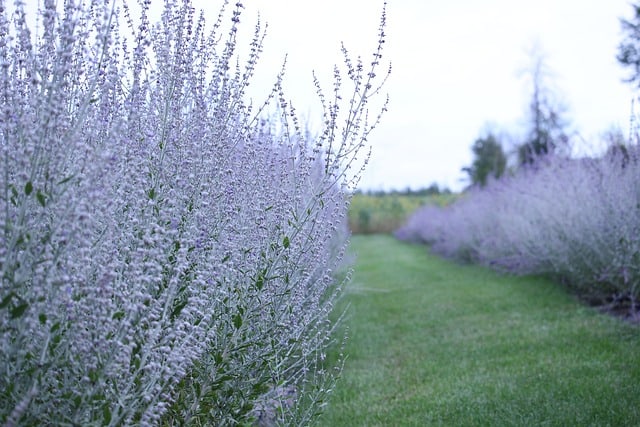
Russian sage flourishes in the hot, dry summers of zone 8a. Plant in well-draining soil in full sun in May, spacing them about 2-3 feet apart due to their prolific growth. They are drought-tolerant once established, allowing for easy care. Regularly pruning the plants will promote a bushier shape and more blooms, creating a stunning focal point in your garden.
Astilbe

Astilbe prefers moisture-retentive soil and partial shade. Plant them in May, spacing them 18-24 inches apart in rich, well-draining soil. They need consistent moisture, especially during dry months, to promote healthy growth and vibrant blooms in mid-summer. Regular watering and mulching are recommended to keep the soil moist. These perennial beauties provide lovely feathery blooms that add elegance to shaded garden areas.
Geraniums (Cranesbill)
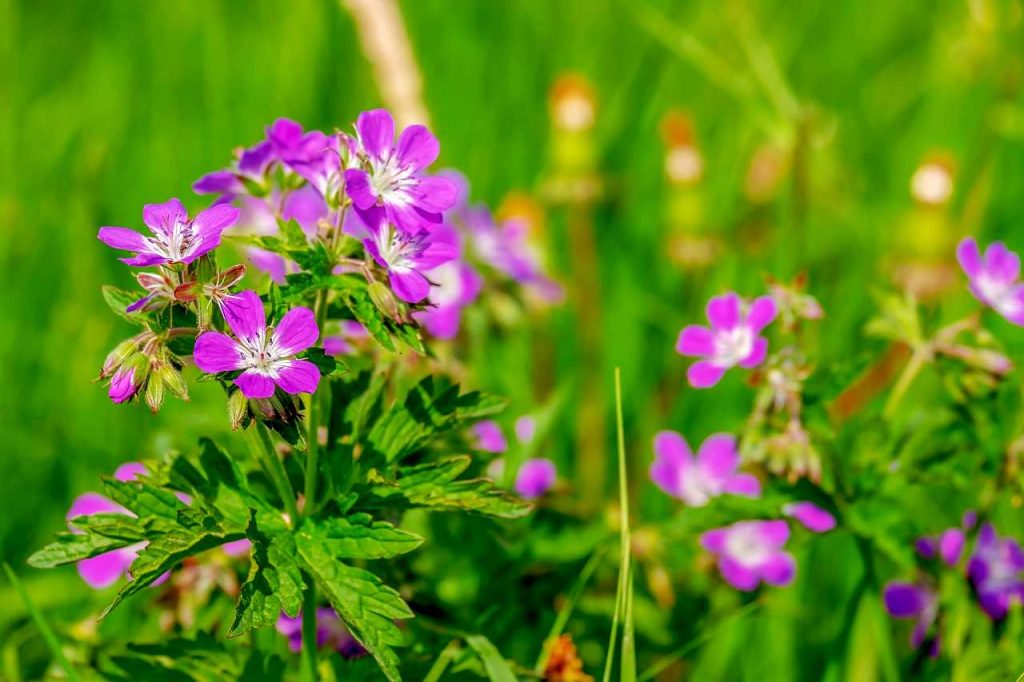
Cranesbill geraniums can be planted in May in well-drained, slightly alkaline soil, with full sun or partial shade. Space them approximately 12 inches apart for proper growth. They are drought-tolerant once established and need little care. Deadheading helps extend their blooming period through early summer.
Shasta Daisy
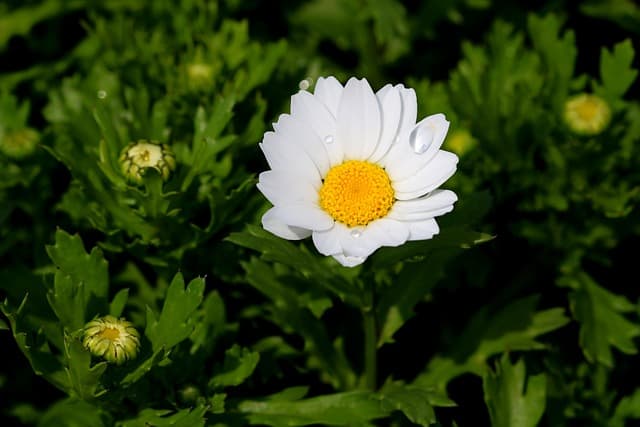
Shasta daisies thrive in sunny locations with well-drained soil and should be planted in May. Space them about 18 inches apart. Regular watering during dry periods will help them settle, while deadheading spent blooms keeps the flowers coming throughout the summer. These cheerful, easy-to-grow perennials attract bees and butterflies, adding life to your garden.
Warm Weather Bulbs To Plant
May is an excellent time to plant various bulbs that will thrive in the heat and humidity of zone 8a. Here are some plants to consider.
Gladiolus

Gladiolus bulbs should be planted in well-draining soil in full sun during May. Space them 6-12 inches apart, depending on the variety. Water them regularly to keep the soil consistently moist during germination. Gladiolus prefers temperatures above 60°F and is quite resilient in the summer heat, producing stunning vertical blooms.
Dahlias

Dahlia tubers should be planted in sunny locations with rich, well-drained soil around late May in zone 8a. Space them about 18 inches apart to allow for growth. While they love warmth, be cautious of frost and mulch if cold temperatures threaten. Water consistently, especially during dry spells, and stake tall varieties for support. Deadheading encourages more blooms throughout the summer.
Calla Lilies
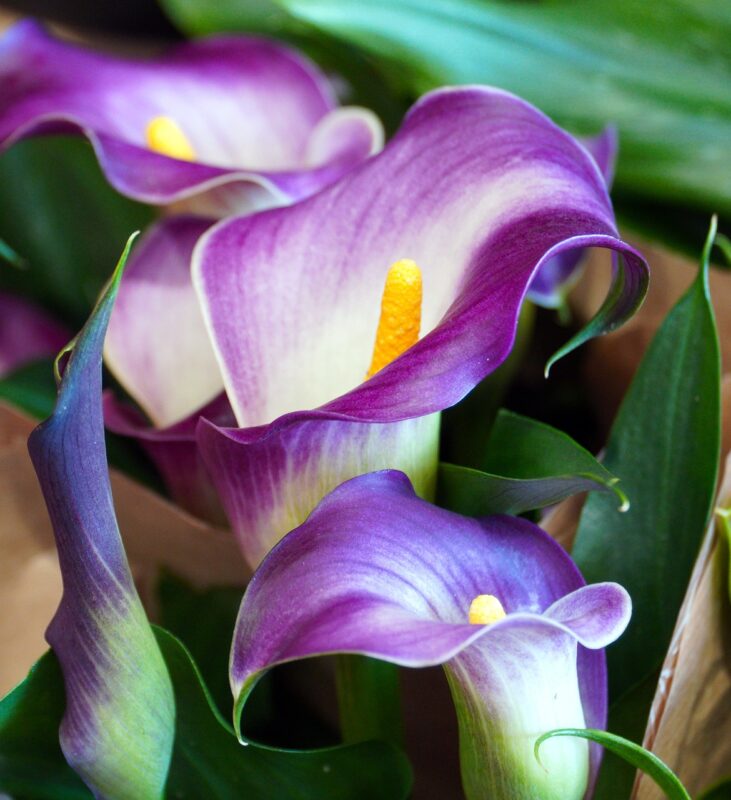
In zone 8a, calla lilies thrive when planted in May in well-draining soil within sunny to partially shaded areas. Plant the bulbs 4-6 inches deep and about 12 inches apart. Regular watering is necessary while they establish, but reduce frequency once they are rooted; avoid waterlogged conditions as they prefer slightly dry soil between watering.
Elephant Ears

Elephant ears should be planted in late spring in warm, well-drained soil with consistent moisture. Space the bulbs about 24 inches apart for sufficient room to grow. They require full sun but will benefit from some afternoon shade during the hottest part of the summer to prevent leaf burn. Regular watering during dry periods helps keep the soil moist.
Canna Lilies
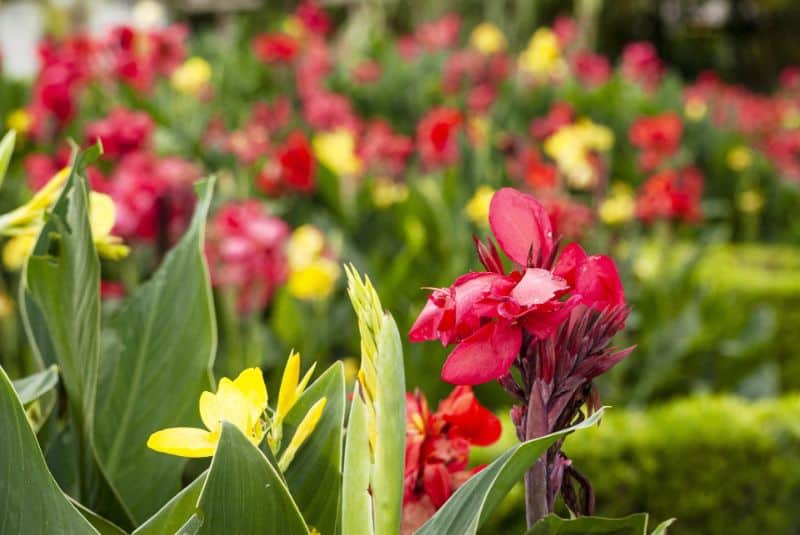
Canna lily tubers are best planted in May in rich, moist soil that allows for good drainage. Space them 18-24 inches apart and choose a sunny location for optimal growth. Regular watering is essential, especially as they establish and begin to bloom. Canna lilies can be susceptible to pests, so keep a watchful eye for aphids and spider mites.
Summer Snowflake
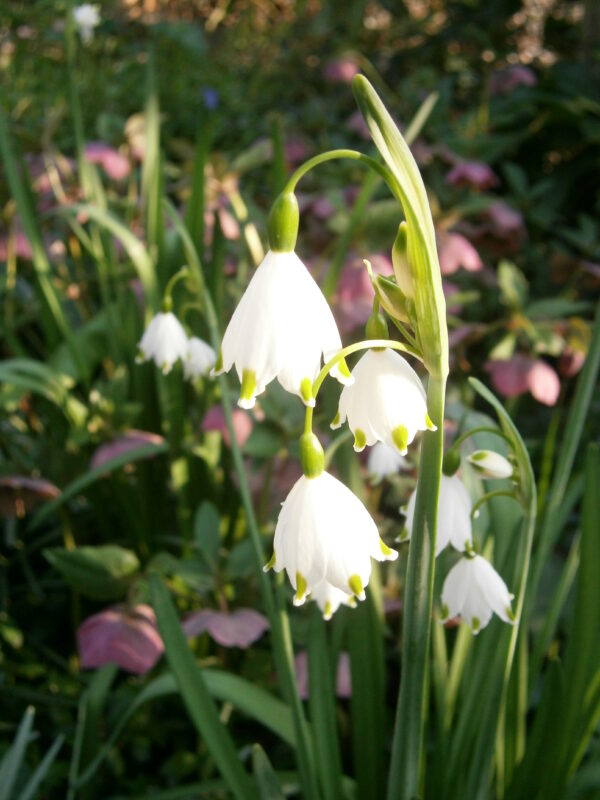
Summer snowflake bulbs should be planted in May in moist, well-drained soil in partial sun or full sun. Space them 12-18 inches apart. They require consistent moisture, especially during dry spells. These delicate bulbs can help add lovely white blooms to your garden from early spring through summer.
Lilies

Lilies can be planted in May in well-drained, loamy soil located in full sun. Plant bulbs about 12-18 inches apart to allow for air circulation. Water regularly to keep them consistently moist through flowering, and avoid waterlogged conditions. Lilies are generally hardy and can thrive in the summer heat of zone 8a as long as they have sufficient nutrients and care.
Allium
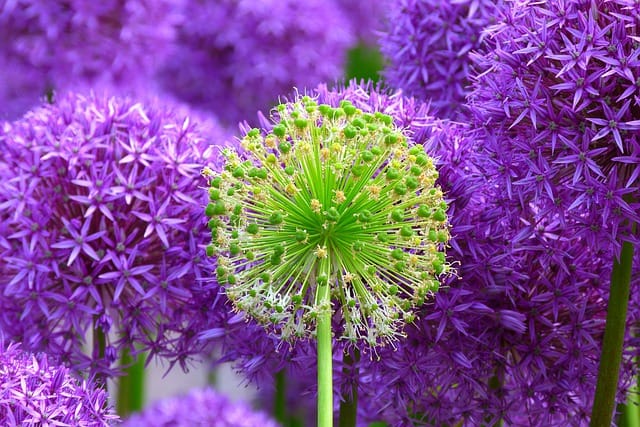
Allium bulbs should be planted in sunny spots with well-drained soil during May. Space them about 10-12 inches apart. They prefer drier conditions once established, so water less frequently to avoid root rot. These striking sphere-like flowers add an architectural element to the garden, attracting pollinating insects.
Tuberous Begonias
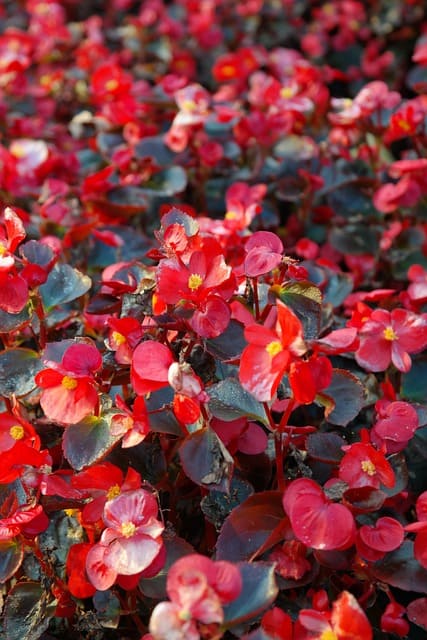
Tuberous begonias can be planted in May in well-drained, rich soil in a shaded or semi-shady area. Space them about 12 inches apart to ensure healthy growth. They need consistent moisture but should not be overly saturated. Proper care yields stunning blooms throughout the summer, providing vibrant color in shadier spots of the garden.
Warm Weather Fruits To Plant
In May, zone 8a provides an ideal climate for establishing a variety of fruiting plants. Here’s a tailored overview of fruit options that thrive this month.
Strawberries

Plant strawberries in May in well-drained soil rich in organic matter. Space plants 18-24 inches apart in full sun to encourage maximum fruiting. They require regular watering, especially during flowering and fruit-setting. Mulch around the plants retains moisture and suppresses weeds. Consider planting varieties like ‘June-bearing,’ which produce crops in late spring.
Blueberries

Blueberries thrive in acidic soil (pH 4.5-5.5) and should be planted in May. Space plants about 4-5 feet apart. Choose a sunny location and add organic matter to your soil. They require consistent moisture, especially during fruit development. Acidic mulch, like pine needles, can help maintain the ideal pH level while also retaining moisture.
Raspberries
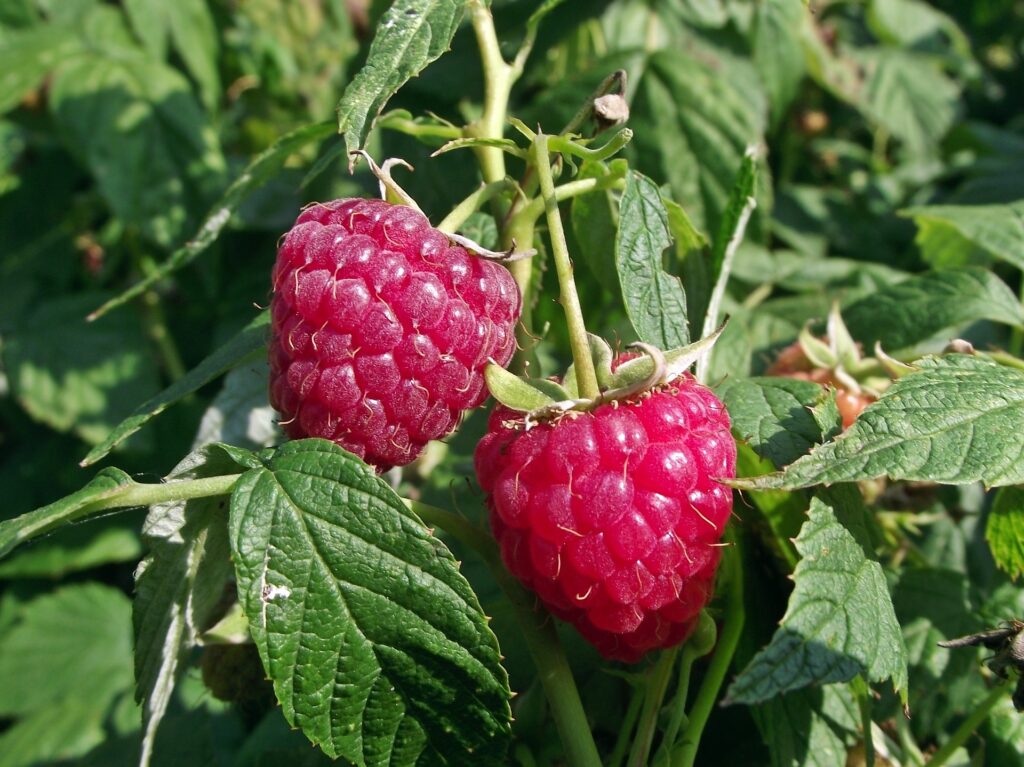
In zone 8a, raspberries can be planted in May for optimal growth. Space plants 2-3 feet apart in well-drained soil and full sun. They require regular watering, particularly during the fruiting stage, and benefit significantly from support in the form of a trellis. Pruning is essential for managing growth and enhancing fruit production.
Blackberries
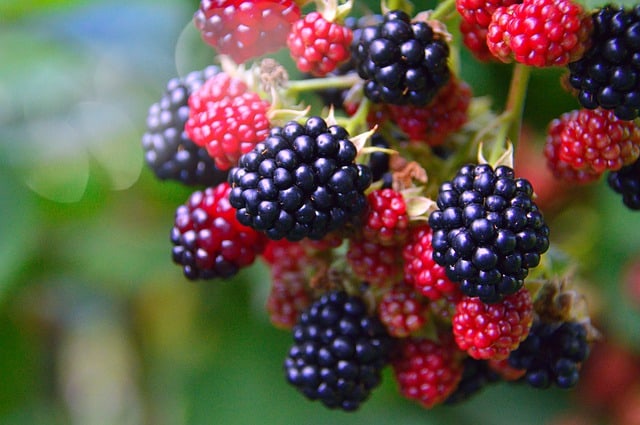
Blackberries are excellent for planting in May in zone 8a. Plant them in sunny spots, ensuring to space plants 3-4 feet apart. These require regular watering, particularly during flowering and fruiting. Utilize trellising for support. Blackberries can thrive in various soil types, but well-drained soil is crucial for preventing root rot.
Grapes
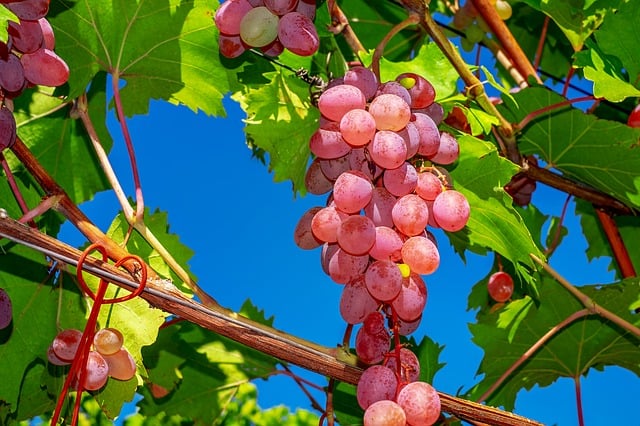
May is an excellent time for planting grapevines in zone 8a. Space them about 6-8 feet apart in full sun, in well-drained soil. Regular watering during their establishment is essential, but once established, they require less moisture. Ensure to provide adequate trellising for support as they grow. Monitor for pests such as aphids and use organic controls to protect your crop.
Cantaloupe
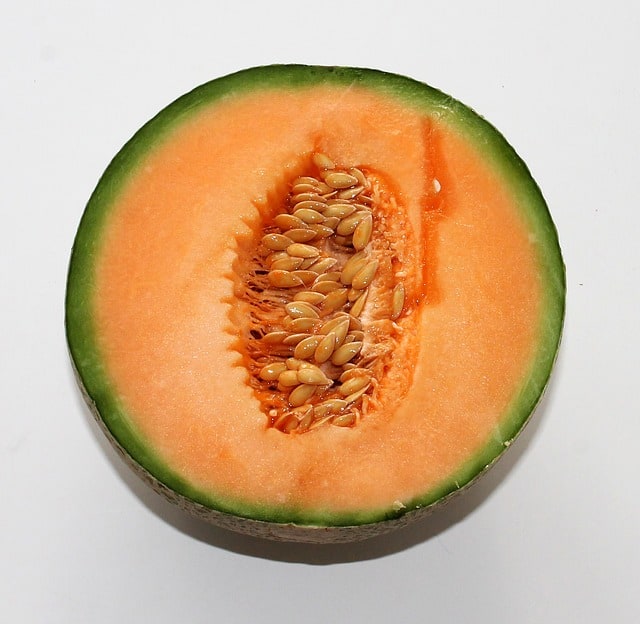
Cantaloupe thrives in the warm climate of zone 8a and should be planted in May. Ensure well-drained soil that is rich in organic material and space seeds 24-36 inches apart. Consistent watering during dry spells helps produce larger, sweeter melons. Use black plastic mulch to warm the soil and protect young plants from soil-borne pests.
Watermelon
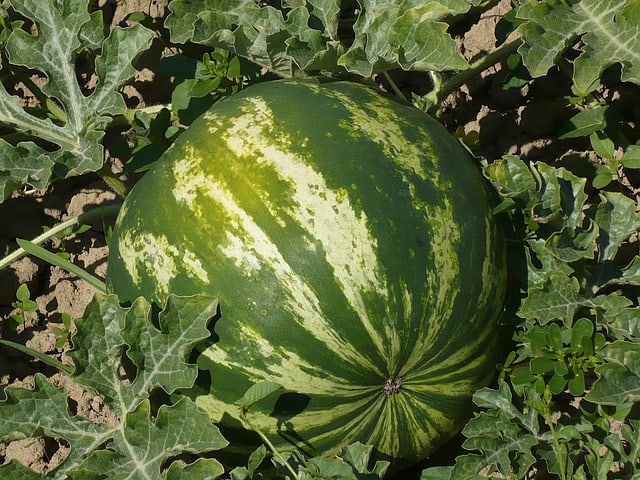
Watermelon is best planted directly in the garden in May when the soil has warmed sufficiently. Sow seeds about 1 inch deep and 24-36 inches apart in rich, well-draining soil. They prefer full sun and consistent moisture, particularly during the fruiting phase. Mulching around the plants will retain soil moisture and help with weed control.
Fig Trees

Fig trees should be planted in warmer microclimates within your zone, typically in full sun with well-draining soil. Space plants 10-15 feet apart. They are drought-tolerant once established, but regular watering helps with fruit production. Fig trees can benefit from some protection from extreme heat; providing afternoon shade can help during the hottest days of summer.
Pear Trees
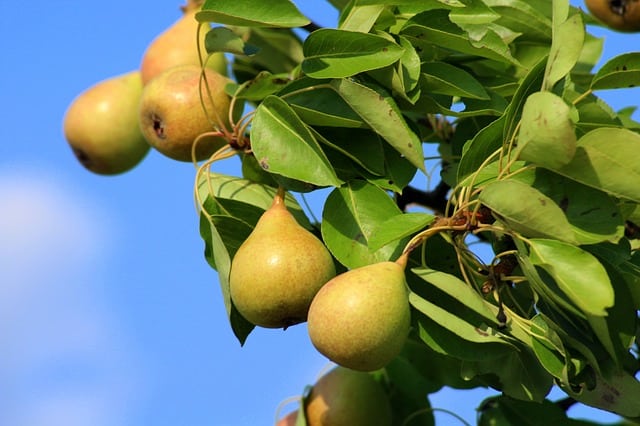
Pear trees can be planted in May in zone 8a in well-drained soil, spacing them about 10-15 feet apart for proper airflow. They enjoy full sun but can tolerate partial shade. Regular watering in the first few years after planting encourages healthy root development, and annual pruning will help shape the trees and improve fruiting.
Peach Trees
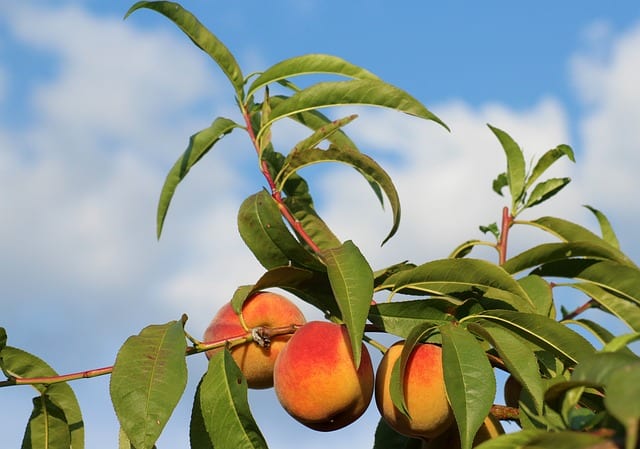
In zone 8a, peach trees should be planted in sunny, well-drained areas in May. Space trees about 15-20 feet apart to allow room for growth. Regular watering is crucial, especially during dry spells, ensuring that the soil is kept moist but not waterlogged. Supporting healthy growth through proper pruning in the early spring can yield more significant harvests.
Herbs To Plant
Herbs can add flavor to your dishes and vibrant colors to your garden. Here’s how to successfully grow these herbs in zone 8a during May.
Basil
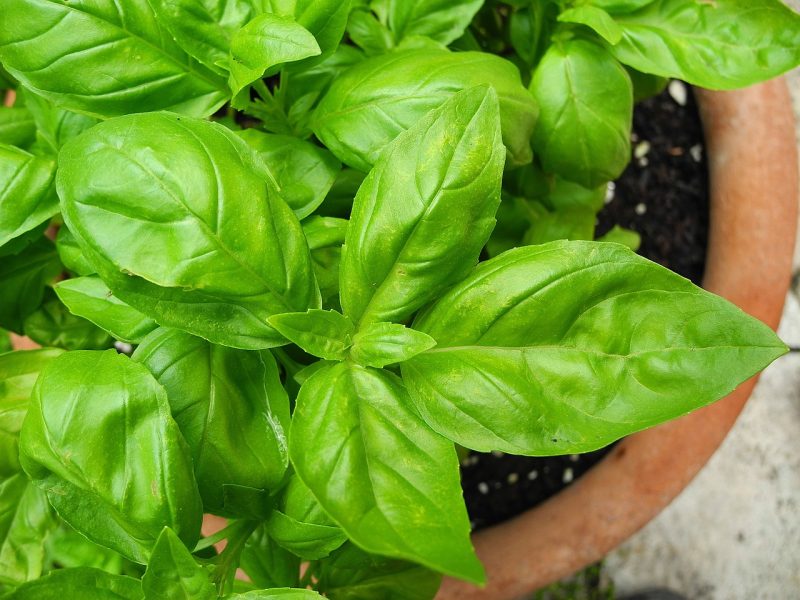
Basil should be planted in May after the last frost. Choose a location with full sun and well-drained, nutrient-rich soil. Space plants 12-18 inches apart and keep them watered to maintain consistent moisture. Regularly pinching off the tips will encourage bushier growth and prevent early flowering. Consider planting different cultivars for a variety of flavors and uses.
Rosemary
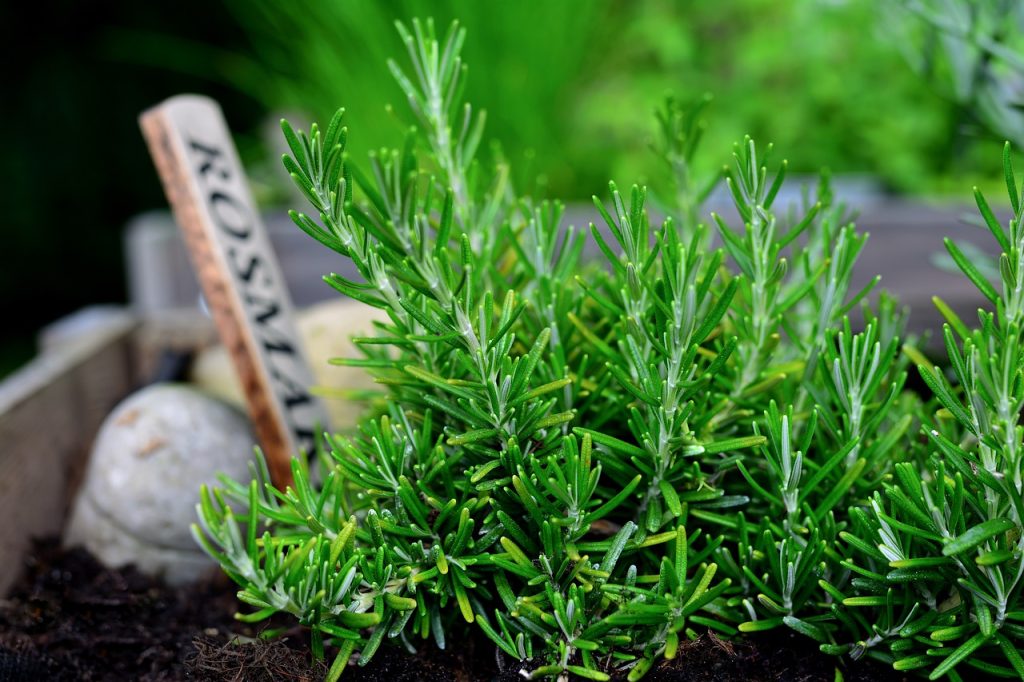
Rosemary thrives in the warm, sunny conditions of zone 8a. Plant seedlings or cuttings in May in well-draining soil. Space them 18-24 inches apart for ample airflow. Rosemary prefers low moisture once established, so allow the soil to dry out between waterings. Regular pruning will encourage new growth and keep plants healthy.
Thyme
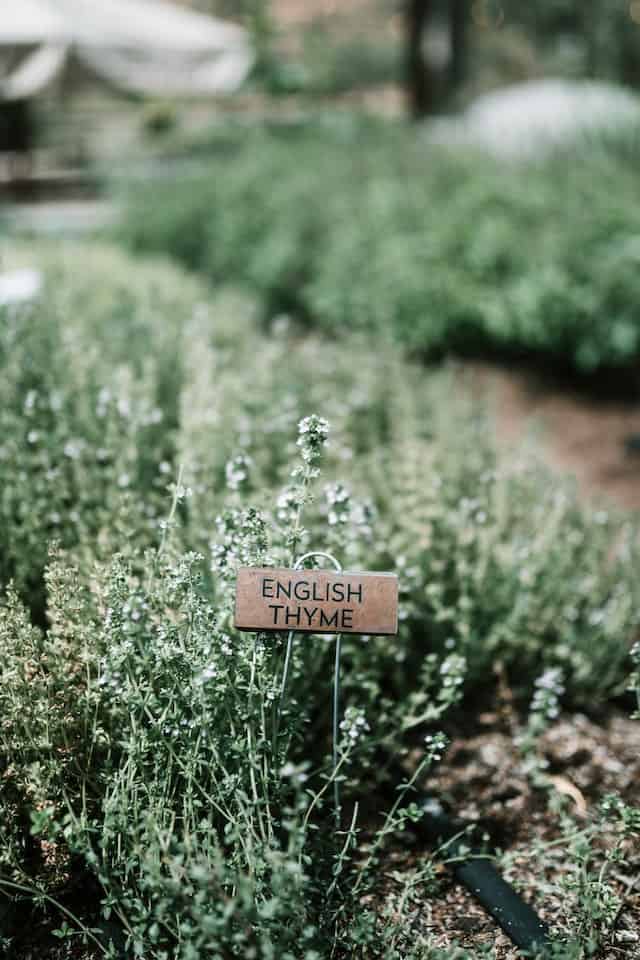
Thyme can be sown directly into the garden or planted in May, preferring well-drained soil and full sun. Space thyme plants 12-18 inches apart. Thyme is drought-tolerant once established, so moderate watering ensures vibrant growth without over-saturation. Harvesting regularly during flowering will enhance the flavor of the leaves.
Oregano
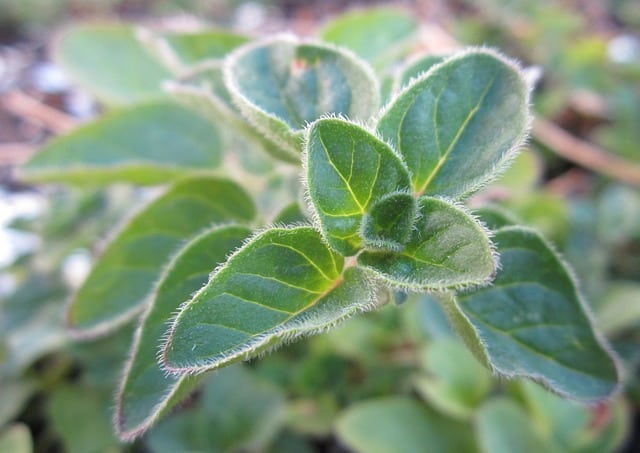
Oregano thrives in well-drained soil under full sun conditions. Plant in May, spacing plants about 12 inches apart. This perennial requires minimal watering once established. Regular cutting encourages denser growth and more flavorful leaves. Oregano can also attract beneficial insects to your garden.
Cilantro
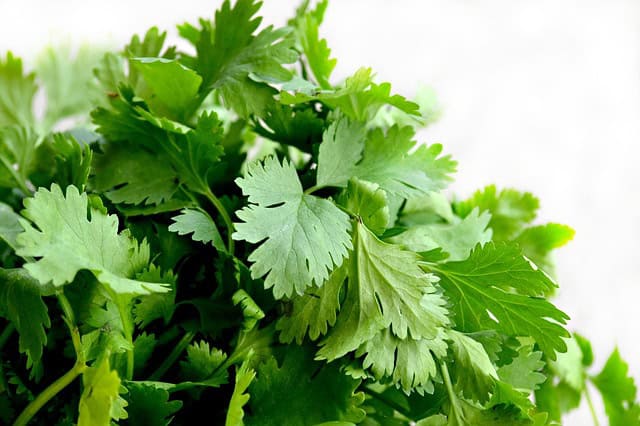
Cilantro prefers cooler growing conditions but can be planted in early May in partial shade or with consistent moisture. Space seeds 6-8 inches apart in well-drained soil. Regular harvesting of leaves is essential to prevent bolting. Monitor for pests like aphids, especially in warm weather, and use natural insecticides as necessary.
Chives
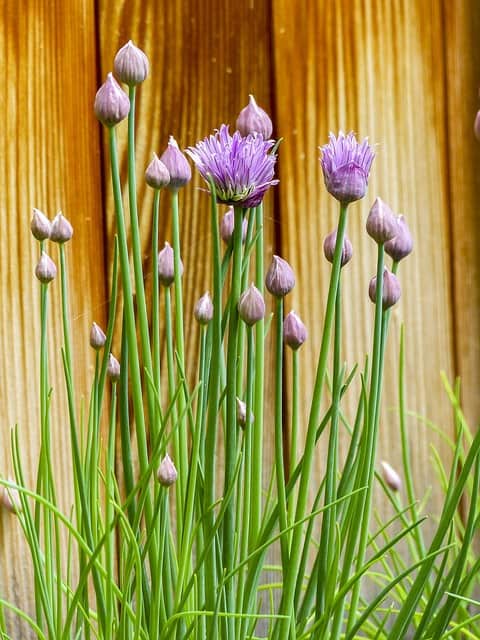
Chives prefer well-drained soil and a sunny location. Plant seeds in May, spacing seedlings about 6-12 inches apart. Keep soil consistently moist during establishment but avoid waterlogged conditions. Chives are low-maintenance and can be harvested regularly, which encourages the growth of fresh foliage.
Dill
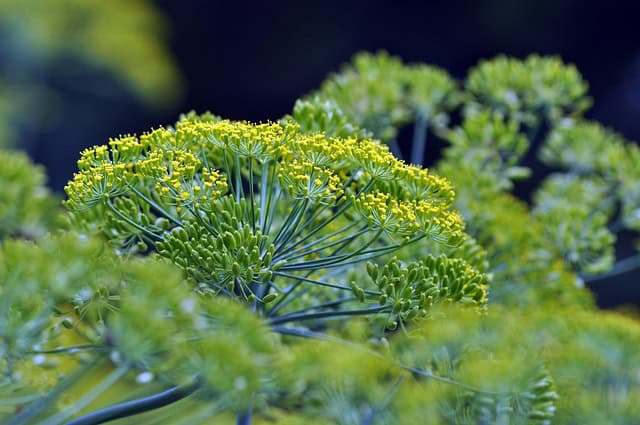
Dill should be directly sown in the garden in mid to late May. This herb prefers full sun with well-drained soil and should be spaced 12 inches apart. Consistent watering during early growth supports healthy development, and pinching flowers off will encourage more leaf growth. Be careful to monitor for aphids.
Mint
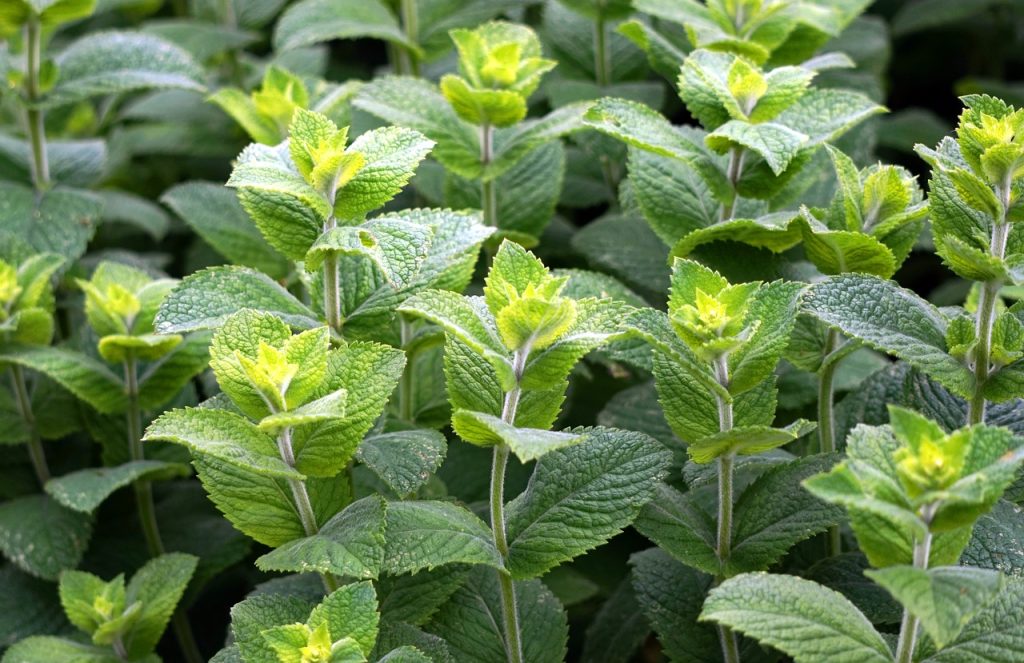
Mint prefers partial shade and rich, moist soil, making it ideal for planting in May in zone 8a. Consider planting in containers to control its spread, spacing them about 12 inches apart in the ground if needed. Regular watering will promote lush growth, and harvesting leaves regularly will encourage flavor while controlling growth.
Sage
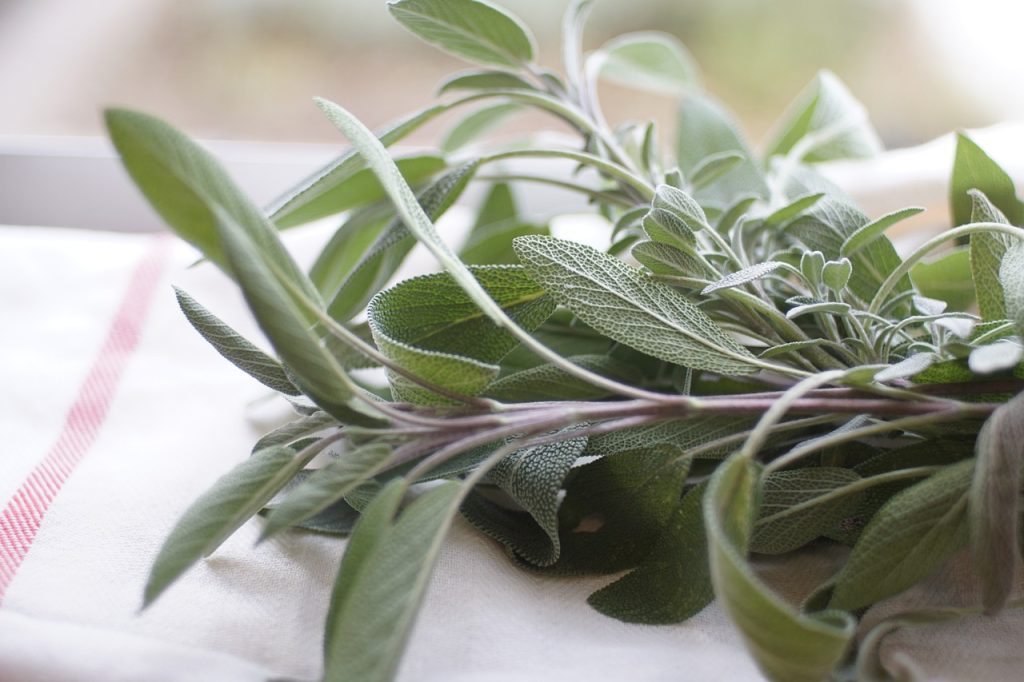
Sage can be planted in well-draining soil in full sun in May. Space them 18-24 inches apart. This herb requires moderate watering during establishment, but once rooted, they prefer drier conditions. Regular pruning keeps sage plants bushy and improves leaf production for culinary use.
Lemon Balm
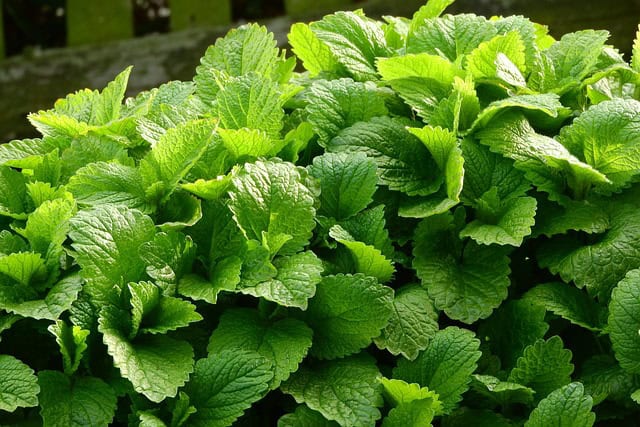
Lemon balm should be planted in May in a location that gets partial shade to full sun. Space plants 12 inches apart in well-drained soil that retains moisture. Regular watering establishes plants, and it is advisable to prune during the growing season to prevent bolting and ensure continued flavor.
Warm Weather Landscape Plants To Plant
Enhancing your landscape with warm-weather plants can add beauty, structure, and variety to your garden. Here’s what to consider planting in May in zone 8a.
Crepe Myrtle
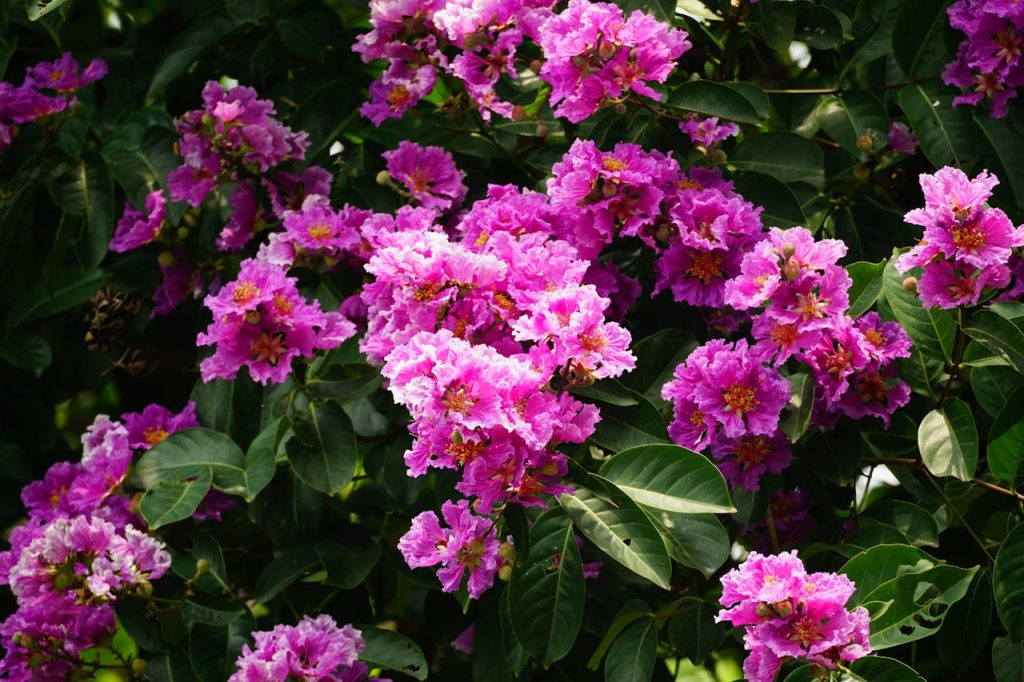
Crepe myrtles thrive in the warm climate of zone 8a and should be planted in May in full sun and well-draining soil. Space plants based on their mature size, generally around 3-5 feet apart. Watering regularly during the first year establishes strong roots—after this point, they are drought-tolerant. Pruning spent blooms and dead wood after flowering will promote bushier growth.
Crape Myrtle
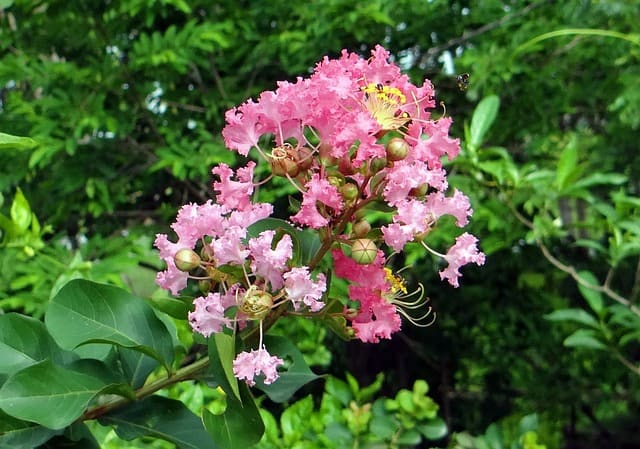
Like crepe myrtle, plant these in well-draining soil in full sun during May. Consider spacing plants 4-6 feet apart, depending on the variety. These flowering shrubs require minimal watering once established, but regular maintenance and deadheading can boost the blooming period significantly.
Oakleaf Hydrangea
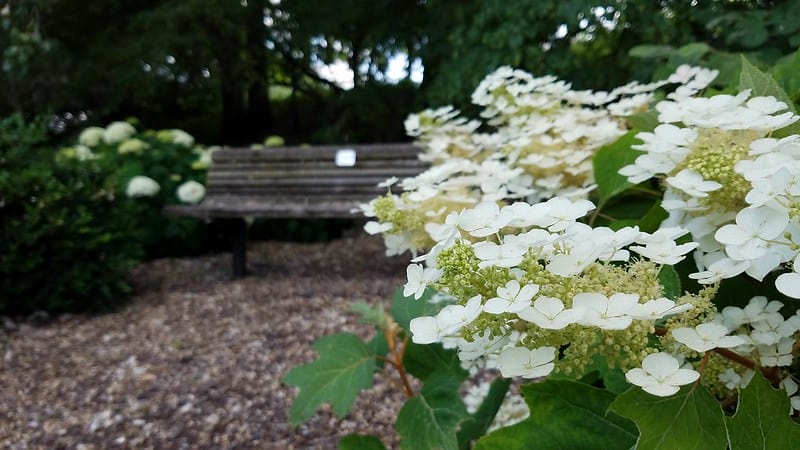
Plant oakleaf hydrangeas in May in well-drained soil that retains moisture and partial shade. Space them 6-10 feet apart for air circulation. These shrubs require consistent watering during establishment and benefit from organic mulch. Pruning after flowering can enhance their shape and promote vigor.
Japanese Maple

In May, Japanese maples should be planted in well-draining soil with some protection from harsh sun. Space them 10-20 feet apart, depending on variety size. Keep the soil consistently moist but not waterlogged, especially during early growth. Regular watering plus some afternoon shade can prevent leaf burn during the hottest months.
Boxwood
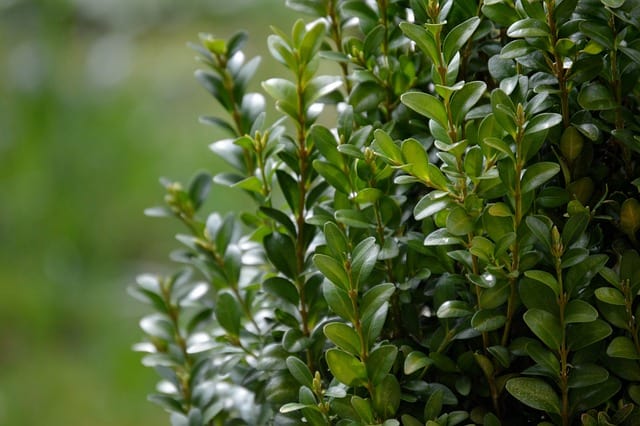
Boxwood can be planted in well-drained soil under full sun or partial shade in May. Space them based on mature size, commonly 1-2 feet apart in ornamental hedges. Pruning during the growing season helps shape and strengthen the plants, while regular watering promotes rapid establishment.
Liriope
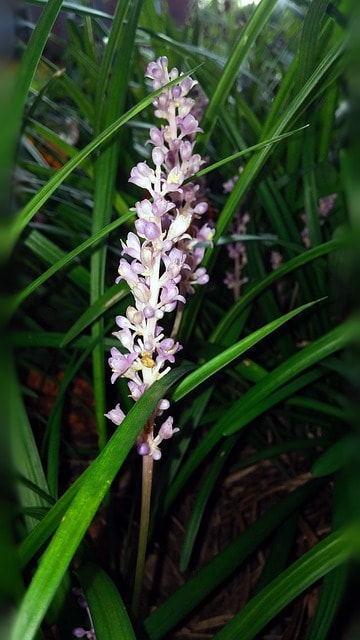
Liriope is a versatile ground cover ideal for planting in May in zone 8a. They prefer partially shaded areas but can tolerate full sun. Space them about 12-18 inches apart in well-draining soil. They require minimal maintenance and moderate watering during establishment, spreading over time to create a lush ground cover with beautiful spikes of flowers.
Butterfly Bush
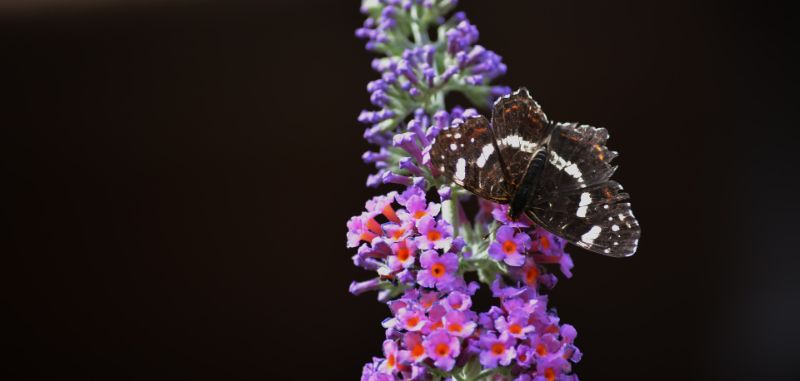
This flowering shrub is perfect for attracting pollinators and can be planted in well-drained soil in full sun in May. Space plants about 3-4 feet apart, as they can grow large and bushy. Regular watering helps establish stronger roots, and deadheading spent blooms can extend the flowering period throughout summer.
Spirea

Plant spirea in full sun or partial shade in May, space them 3-4 feet apart to allow for their growth. These shrubs thrive in well-drained soil and require moderate watering during establishment. Regular pruning after blooming promotes new growth and vibrant blooms for the next season.
Russian Sage

Russian sage loves the heat, making it perfect for planting in May in sunny locations with well-draining soil. Space them about 2-3 feet apart to allow room for their mature size and ensure healthy airflow. They are drought-tolerant once established, needing minimal care once their root systems are established.
Daylilies

Daylilies can be planted in well-drained soil in full sun to partial shade during May. Space them 18-24 inches apart to allow for healthy growth. They are tolerant of drought conditions once established, but regular watering during dry spells promotes more vibrant blooms. Deadheading encourages more blooms over the summer, providing continuous color.
FAQ
What is the average last frost date for zone 8a?
In zone 8a, the average last frost date typically falls between March 15 and April 15. Gardeners should monitor local forecasts and be prepared to protect plants from late frosts if necessary.
Can I plant vegetables and flowers at the same time?
Yes, many vegetables and flowers can be successfully planted together in zone 8a. Companion planting can enhance the garden’s biodiversity, attract beneficial insects, and offer pest control benefits.
How do I know if my soil is ready for planting?
Soil is ready for planting in zone 8a when it is loose, crumbly, and well-drained. Conducting a soil test is advisable to evaluate nutrient levels and pH, ensuring an optimal environment for your chosen plants.
Can I start planting fruits and vegetables earlier than May?
Some cool-weather crops can be planted earlier in the spring months, but warm-weather crops thrive best when planted in May once soil temperatures warm sufficiently and the risk of frost diminishes.
What are some tips for maintaining plants in the summer heat?
Provide deep watering during the cooler parts of the day, and consider mulching to retain moisture in the soil. Be attentive to local weather patterns and adjust watering based on rainfall amounts.
Are there any concerns about planting too late in the growing season?
Late-season plantings may prevent crops from maturing before cold weather sets in. For optimal harvests, aim to plant all warm-weather crops by the end of May in zone 8a.
Can I use commercial fertilizers on all plants?
It’s crucial to understand the specific nutrient needs of the plants you are growing. While many vegetable varieties respond well to fertilizers, some herbs thrive in less nutrient-dense environments, so consider using organic fertilizers for a balanced approach.


